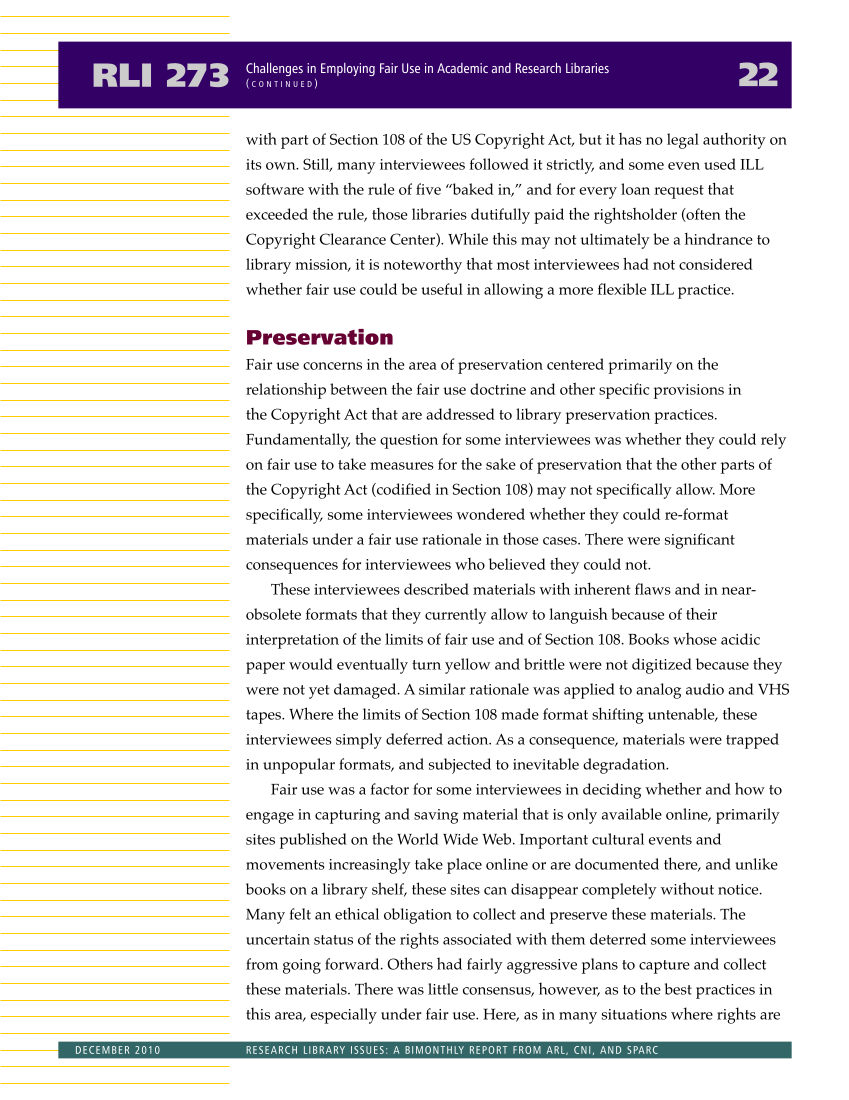with part of Section 108 of the US Copyright Act, but it has no legal authority on its own. Still, many interviewees followed it strictly, and some even used ILL software with the rule of five “baked in,” and for every loan request that exceeded the rule, those libraries dutifully paid the rightsholder (often the Copyright Clearance Center). While this may not ultimately be a hindrance to library mission, it is noteworthy that most interviewees had not considered whether fair use could be useful in allowing a more flexible ILL practice. Preservation Fair use concerns in the area of preservation centered primarily on the relationship between the fair use doctrine and other specific provisions in the Copyright Act that are addressed to library preservation practices. Fundamentally, the question for some interviewees was whether they could rely on fair use to take measures for the sake of preservation that the other parts of the Copyright Act (codified in Section 108) may not specifically allow. More specifically, some interviewees wondered whether they could re-format materials under a fair use rationale in those cases. There were significant consequences for interviewees who believed they could not. These interviewees described materials with inherent flaws and in near- obsolete formats that they currently allow to languish because of their interpretation of the limits of fair use and of Section 108. Books whose acidic paper would eventually turn yellow and brittle were not digitized because they were not yet damaged. A similar rationale was applied to analog audio and VHS tapes. Where the limits of Section 108 made format shifting untenable, these interviewees simply deferred action. As a consequence, materials were trapped in unpopular formats, and subjected to inevitable degradation. Fair use was a factor for some interviewees in deciding whether and how to engage in capturing and saving material that is only available online, primarily sites published on the World Wide Web. Important cultural events and movements increasingly take place online or are documented there, and unlike books on a library shelf, these sites can disappear completely without notice. Many felt an ethical obligation to collect and preserve these materials. The uncertain status of the rights associated with them deterred some interviewees from going forward. Others had fairly aggressive plans to capture and collect these materials. There was little consensus, however, as to the best practices in this area, especially under fair use. Here, as in many situations where rights are RLI 273 22 Challenges in Employing Fair Use in Academic and Research Libraries ( C O N T I N U E D ) DECEMBER 2010 RESEARCH LIBRARY ISSUES: A BIMONTHLY REPORT FROM ARL, CNI, AND SPARC







































